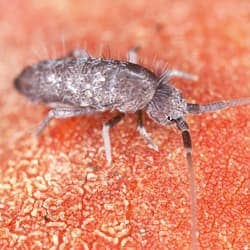
Are These Fleas Or Springtails?
5/6/2016
When the weather outside is rainy, then it turns dry, this is the perfect storm to be invaded by springtails. First, the rain allows for rapid reproduction. Then, the dry conditions drive them inside to find moisture. If you are seeing tiny jumping critters in your home, they may not necessarily be springtails. They might be fleas. But, how can you tell the difference?
Springtails, also referred to as puddle jumpers because they can be found in stagnant puddles, or snow fleas because they can withstand extremely cold temperatures, are not directly harmful in any way to humans or belongings. They don’t bite and they don’t transmit diseases like other household pests. But they can be the cause of itching dermatitis.
Fleas, on the other hand, do transmit diseases to humans and as we are sure you know, they DO bite.
For springtails, there are approximately 700 different species in North America and they are considered to be one of the most common soil insects. These little critters can be found in potted plants, in vegetable matter, and around decaying plant material. Springtails eat organic material including logs, firewood, leaf litter, mulch, vegetable matter, spores, pollen, algae, mold, and fungi.
Fleas eat blood and are happy to feed on any warm-blooded body.
Springtails are about ⅛ of an inch long, they have 6 legs, no wings, and come in a variety of colors. They also have a fascinating little appendage called a furcula at the end of their abdomen. This is what the springtail gets its name from, since when it is suddenly released, it flings the little creature into the air. (This, incidentally, is why springtails are often mistaken for fleas.)
Fleas are a dark-reddish brown and can be as large as ⅙ of an inch long. They also have 6 legs–like the springtails–and they use these legs to jump as high as 8 or 16 inches horizontally.
Springtails are useful in that they enrich the soil by breaking down organic matter and releasing the nutrients back into the soil. Because of this activity, springtails are considered to be helpful in keeping soil healthy.
Fleas have no beneficial characteristics.
Springtails are nocturnal, which means they are only active at night. During the day, they remain hidden in dark, moist places.
Fleas are active anytime.
So, what do these two pests have in common?
Though these two critters can be easily mixed up if you aren’t looking closely, they have one major thing in common: Neither one is a welcome guest inside our homes. If you’re are dealing with either one of these bugs, let the professionals here at Schendel Pest Services take care of them for you. Life is just better without jumping bugs…whether they bite or not.










